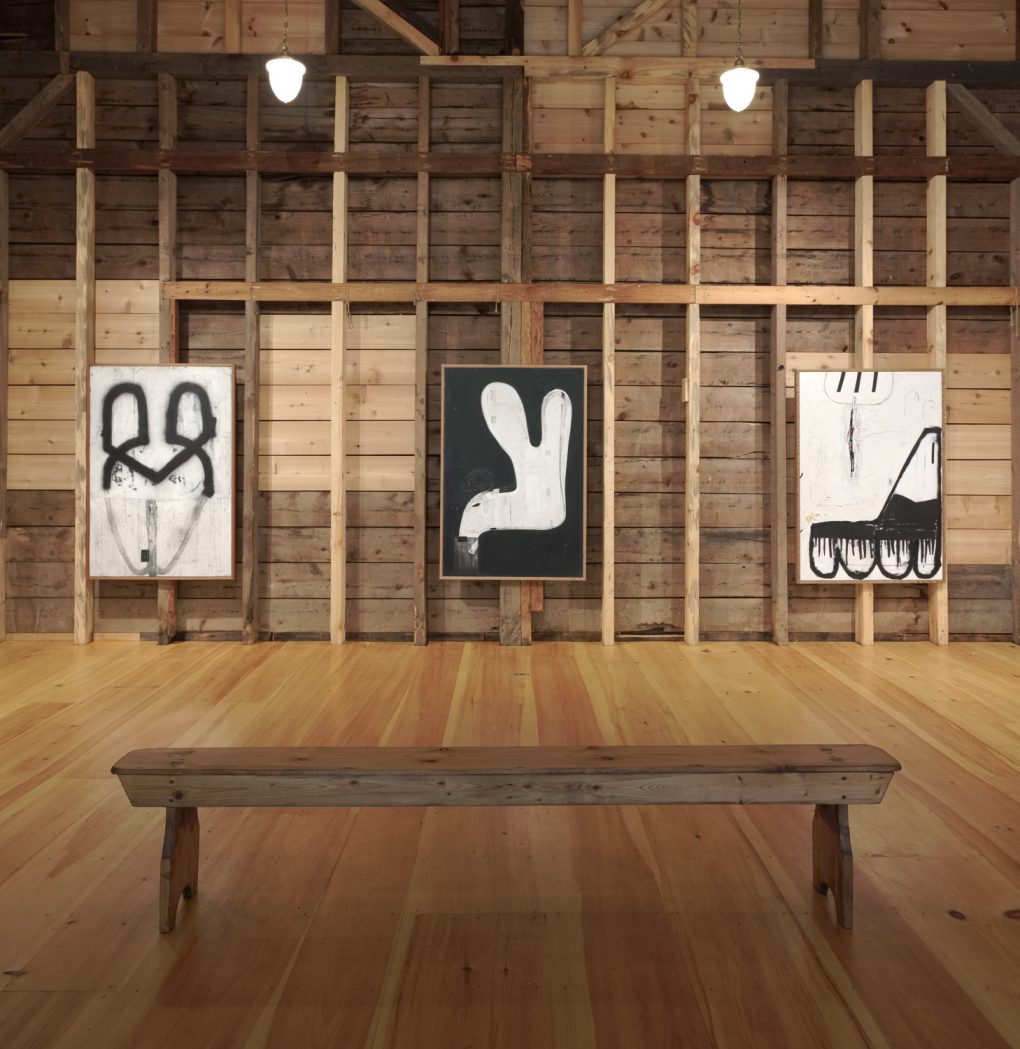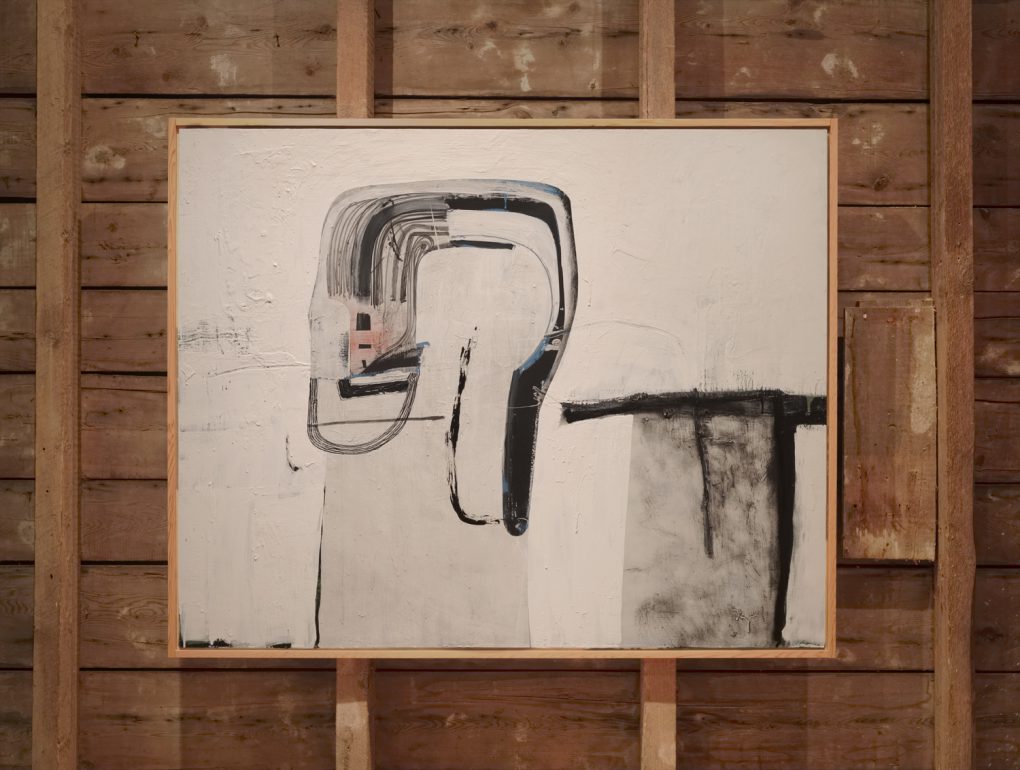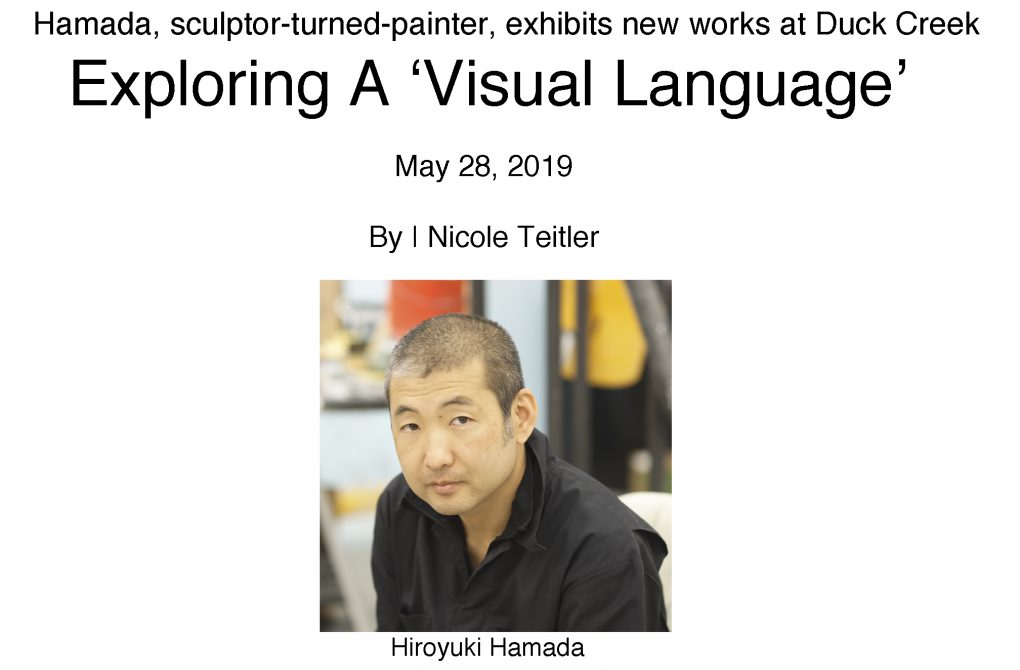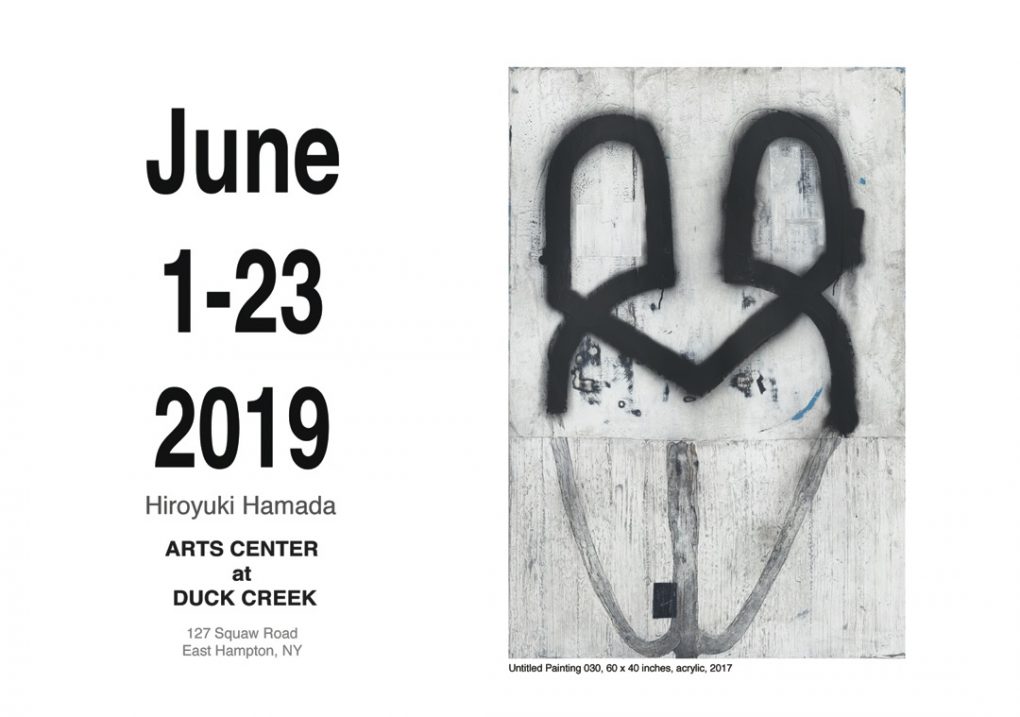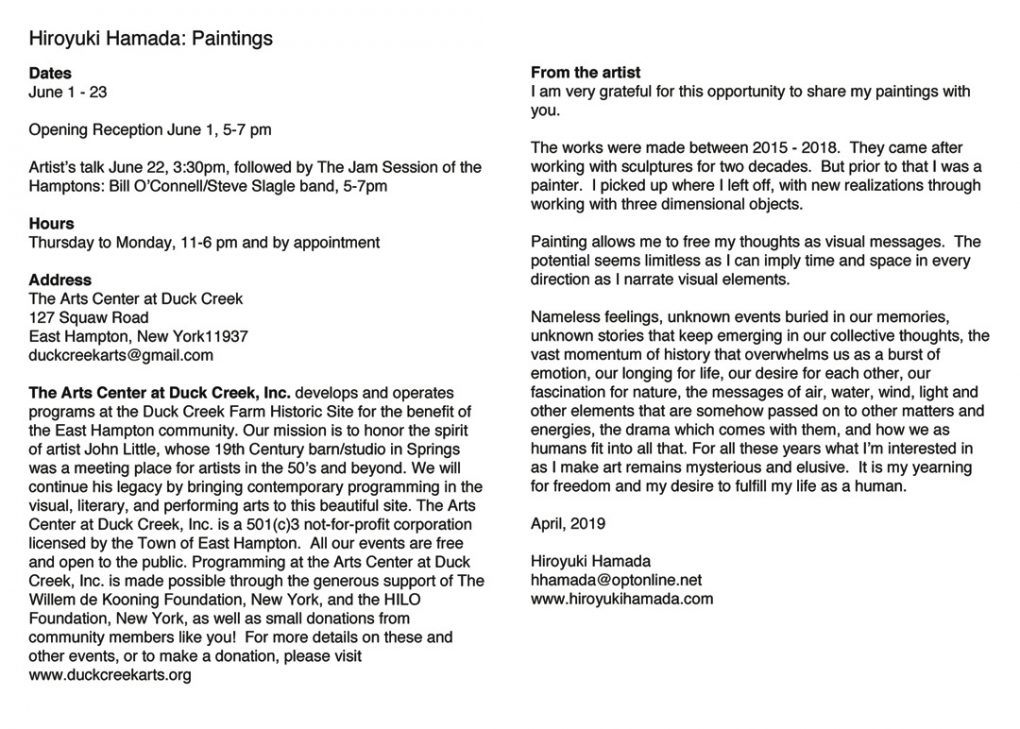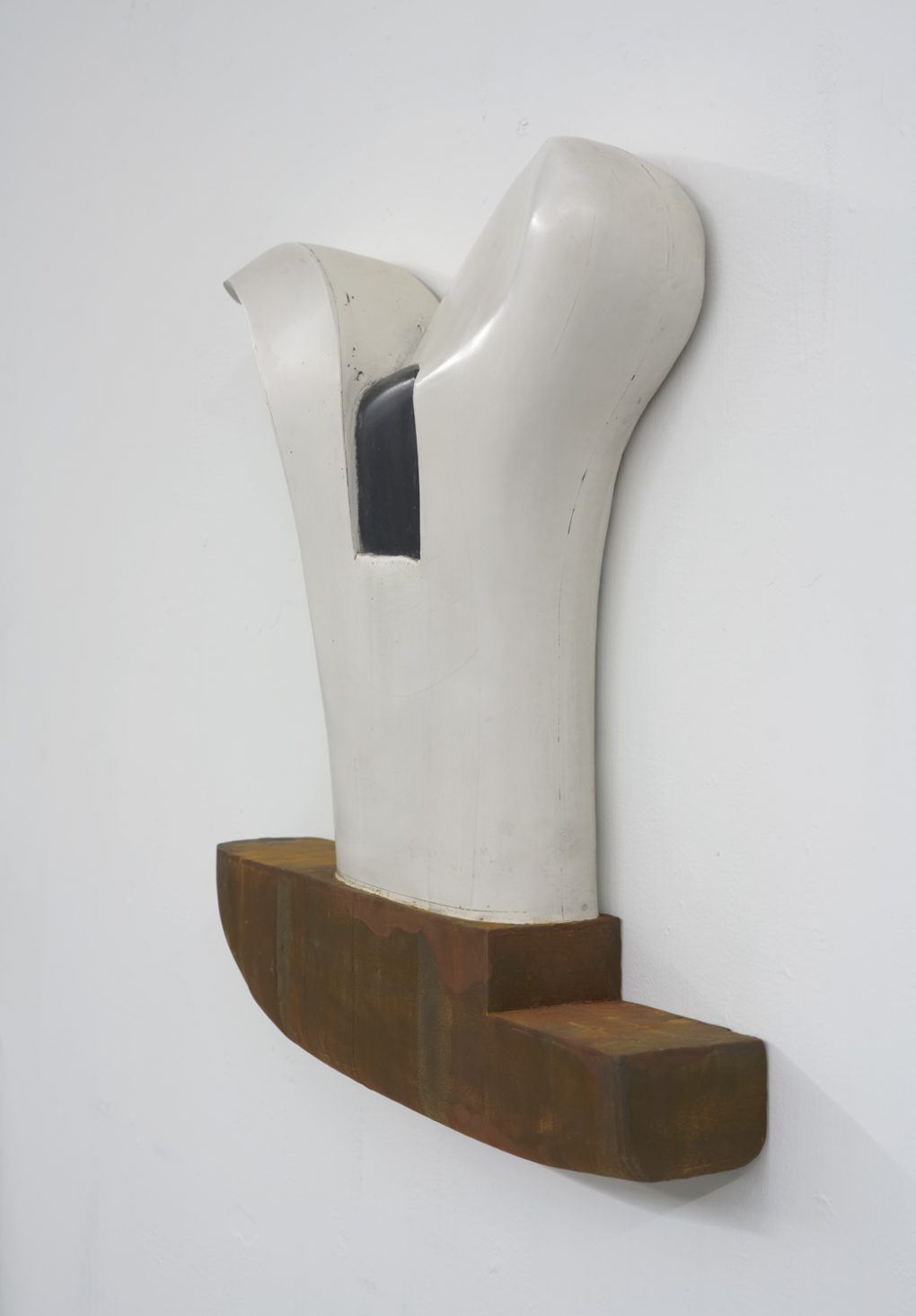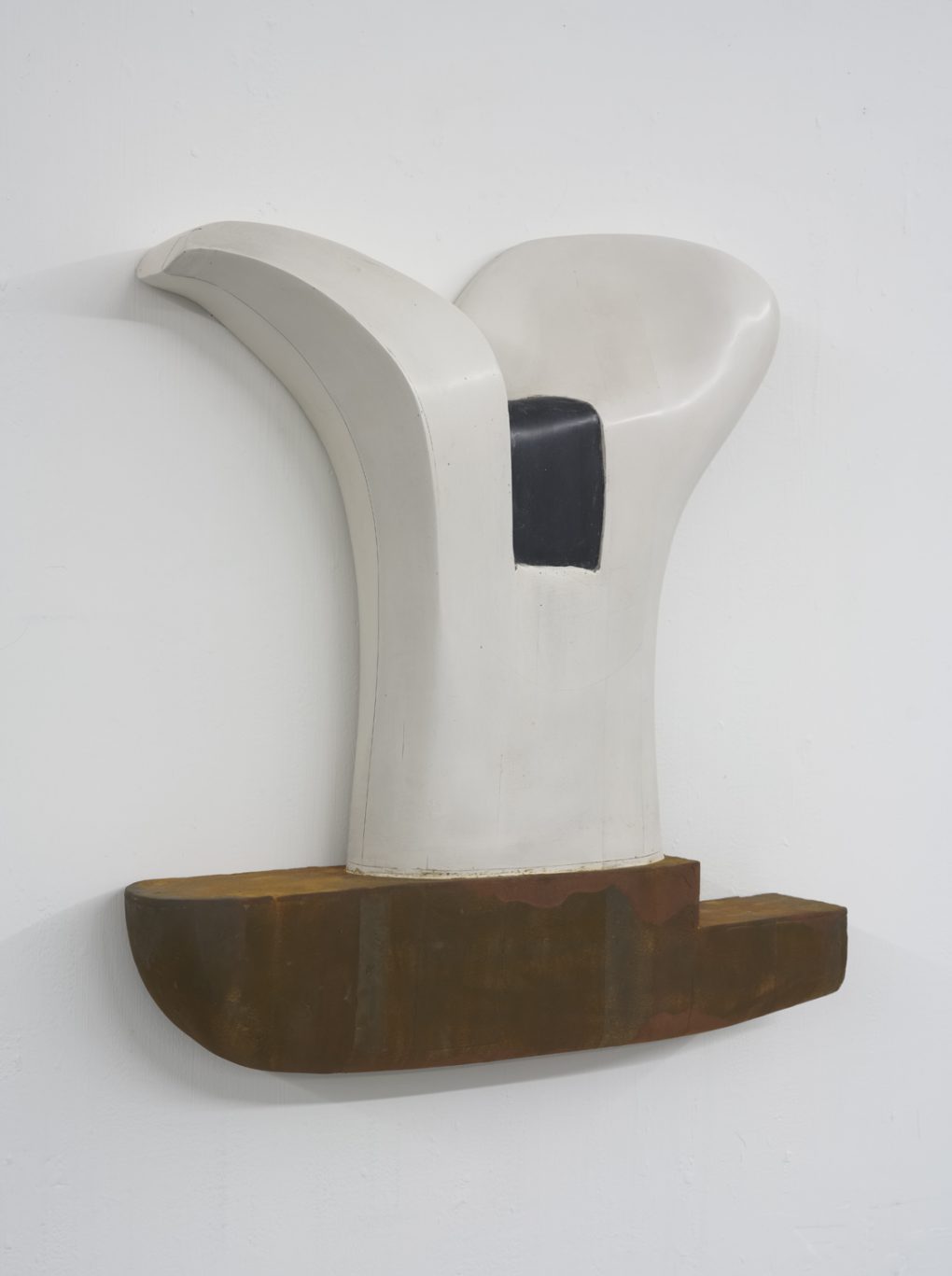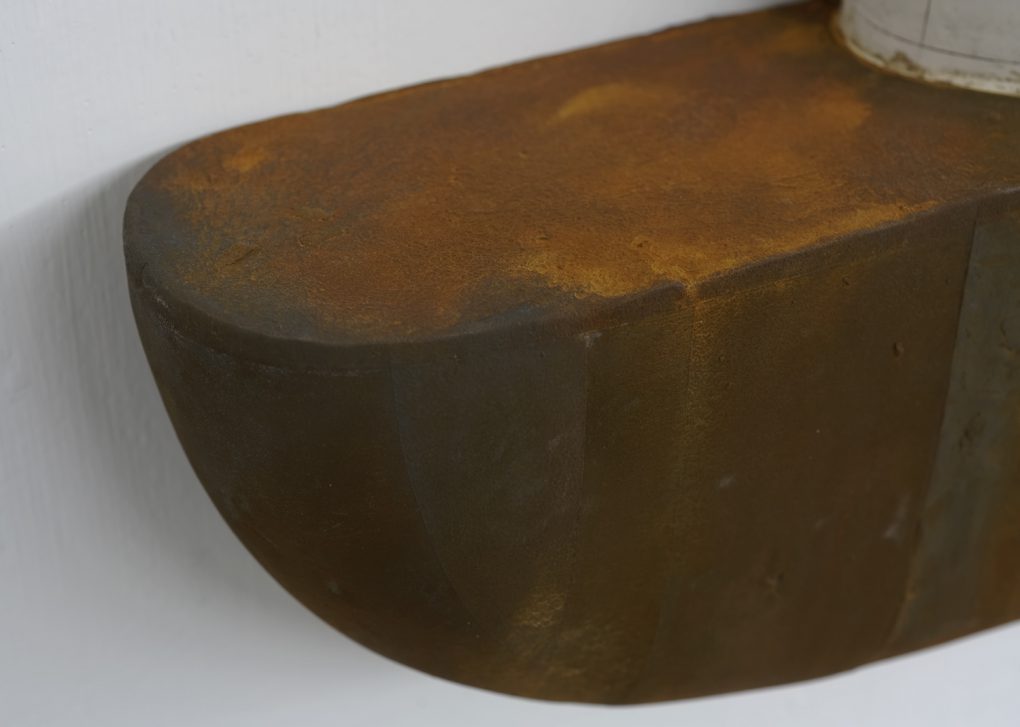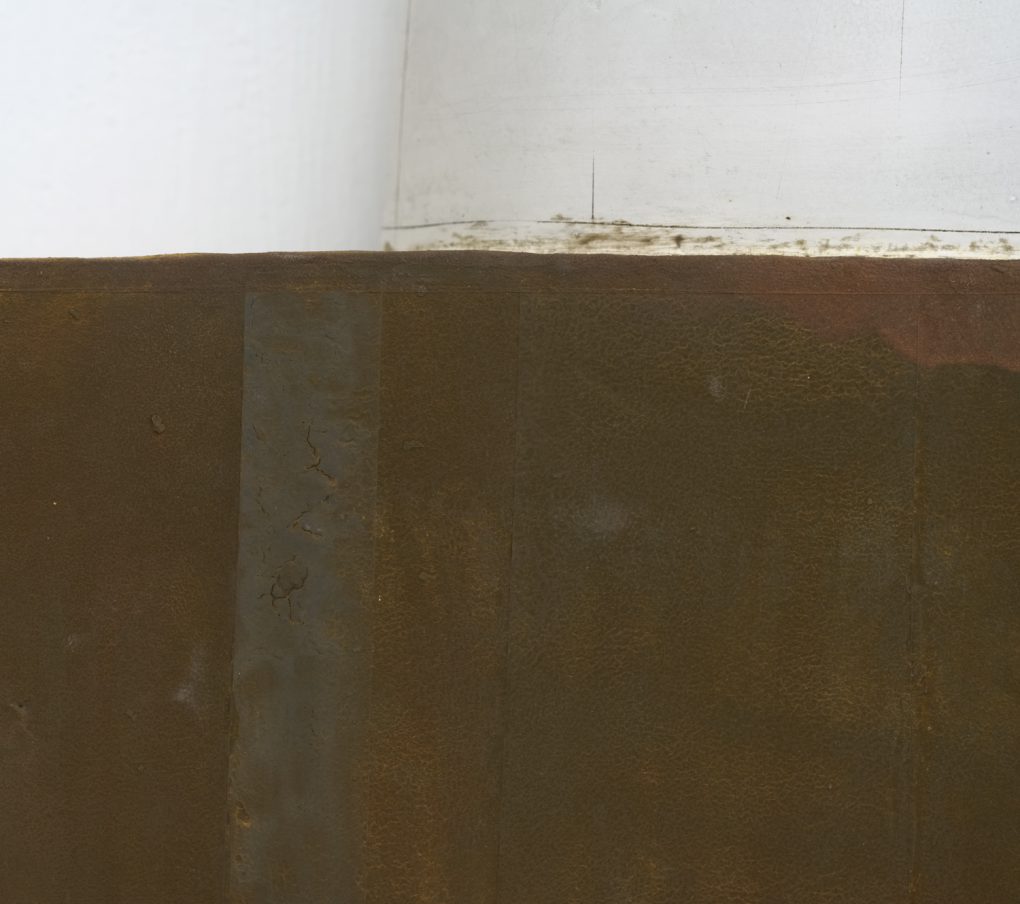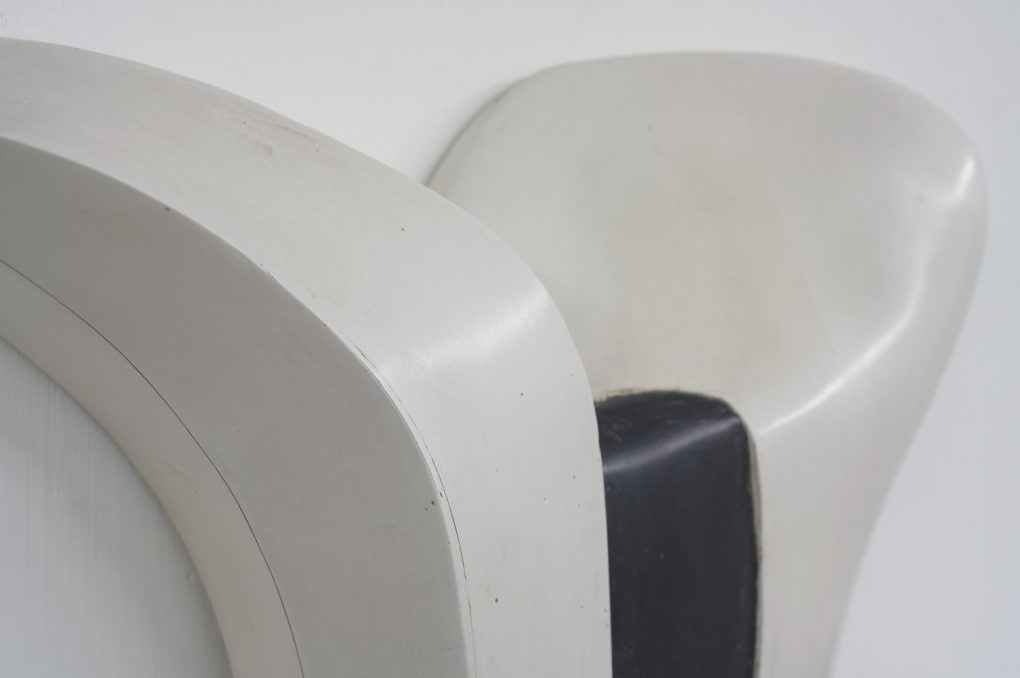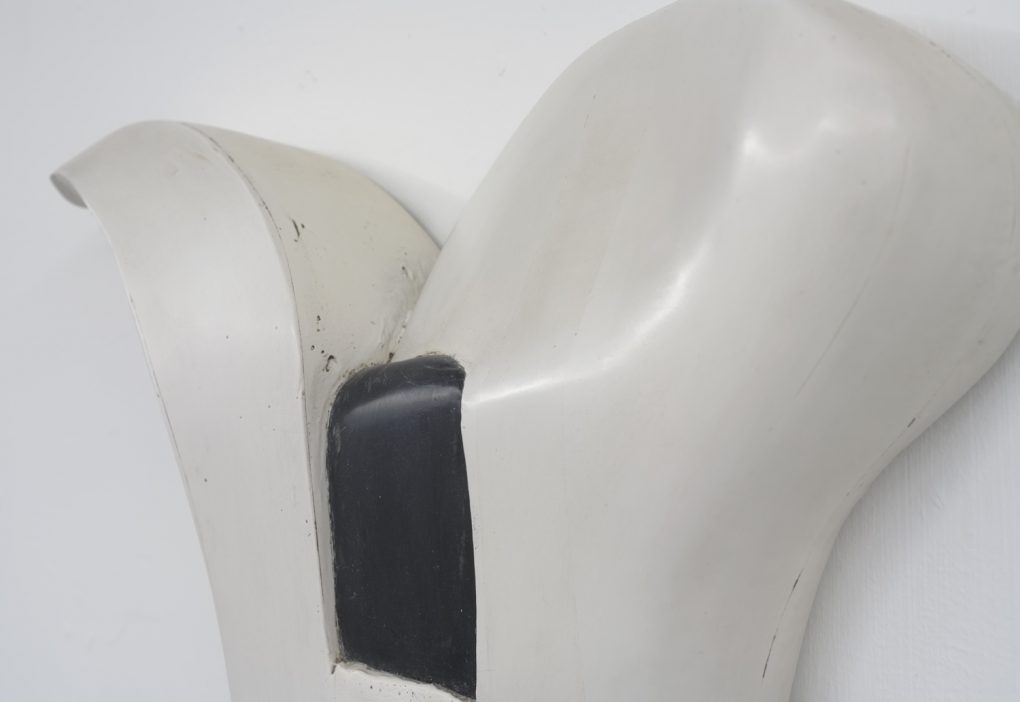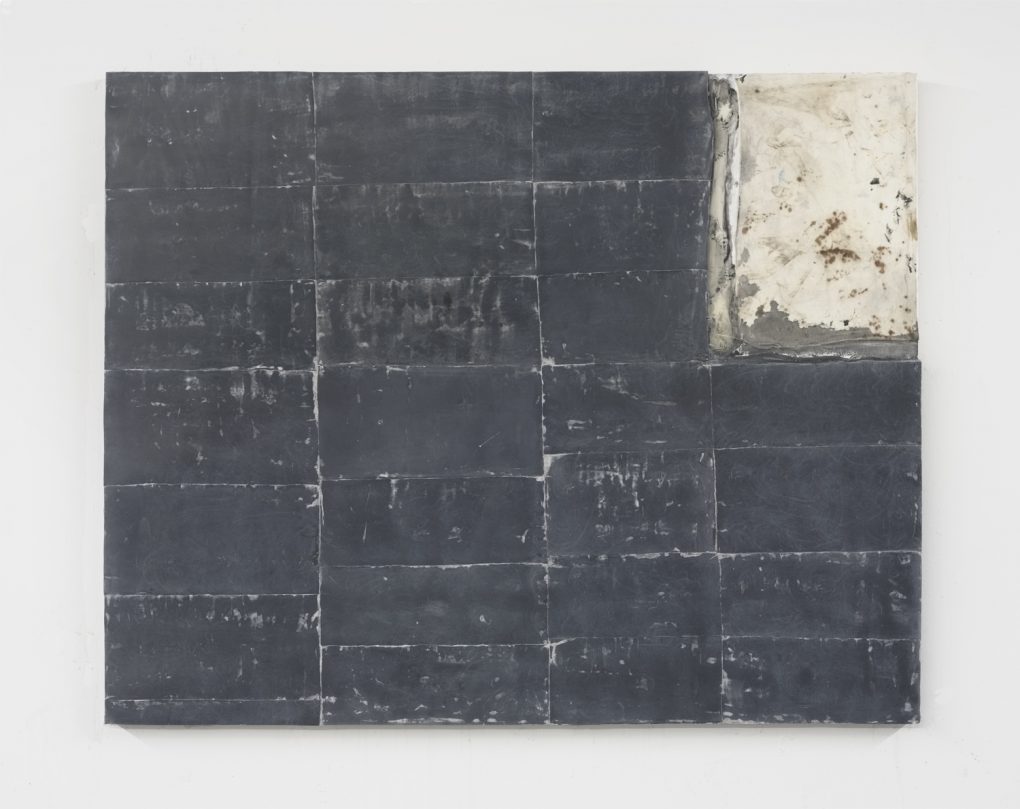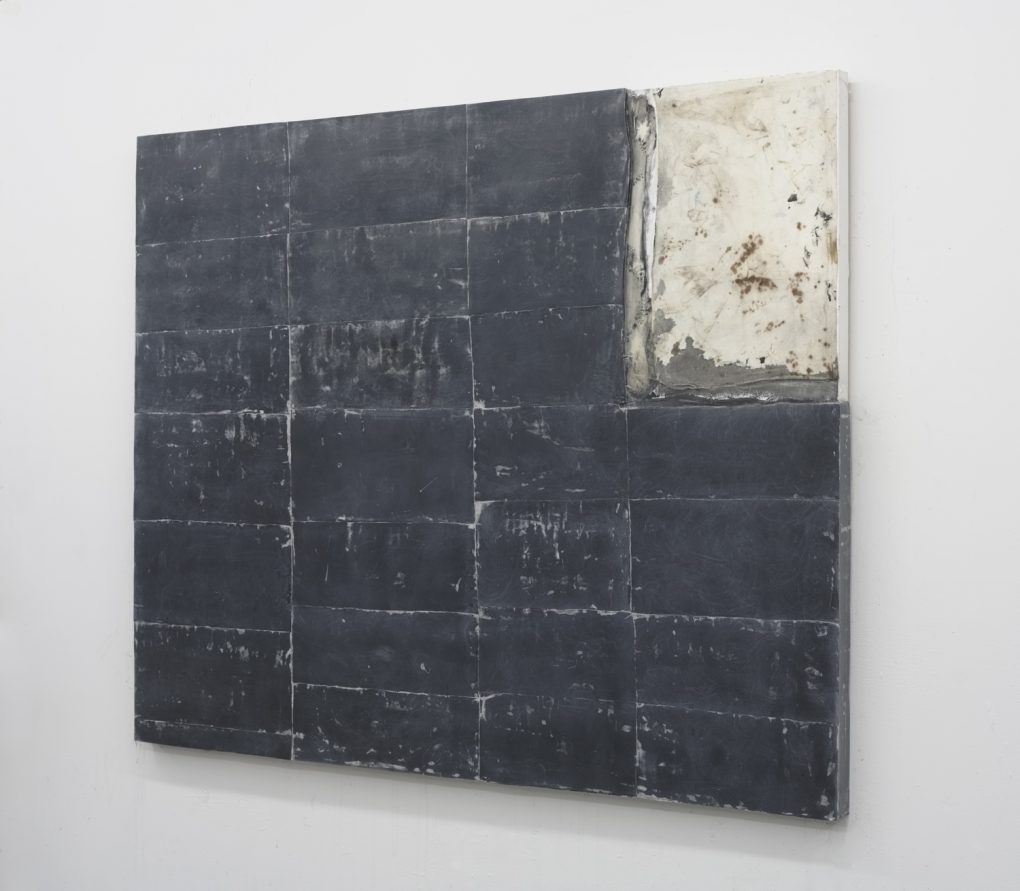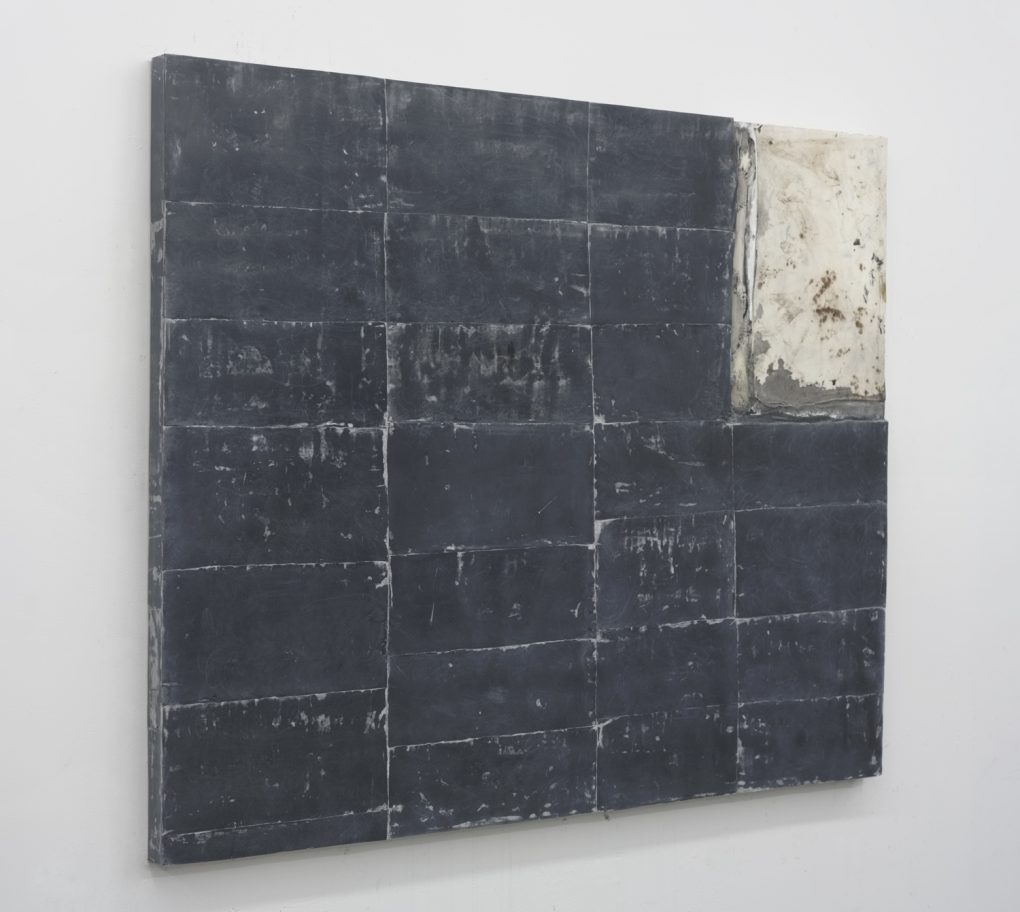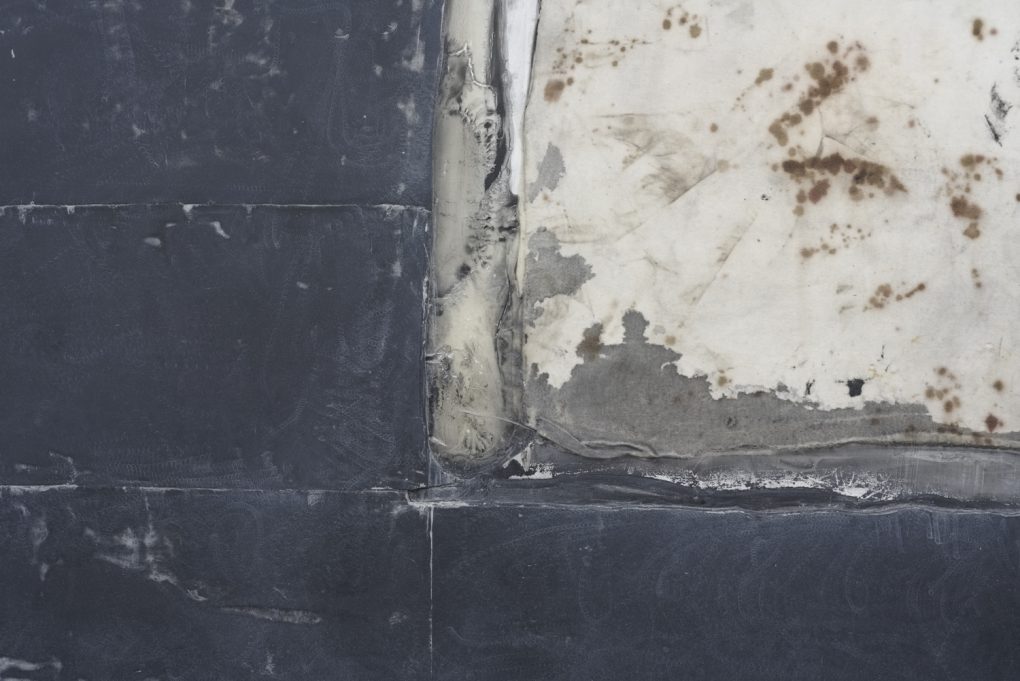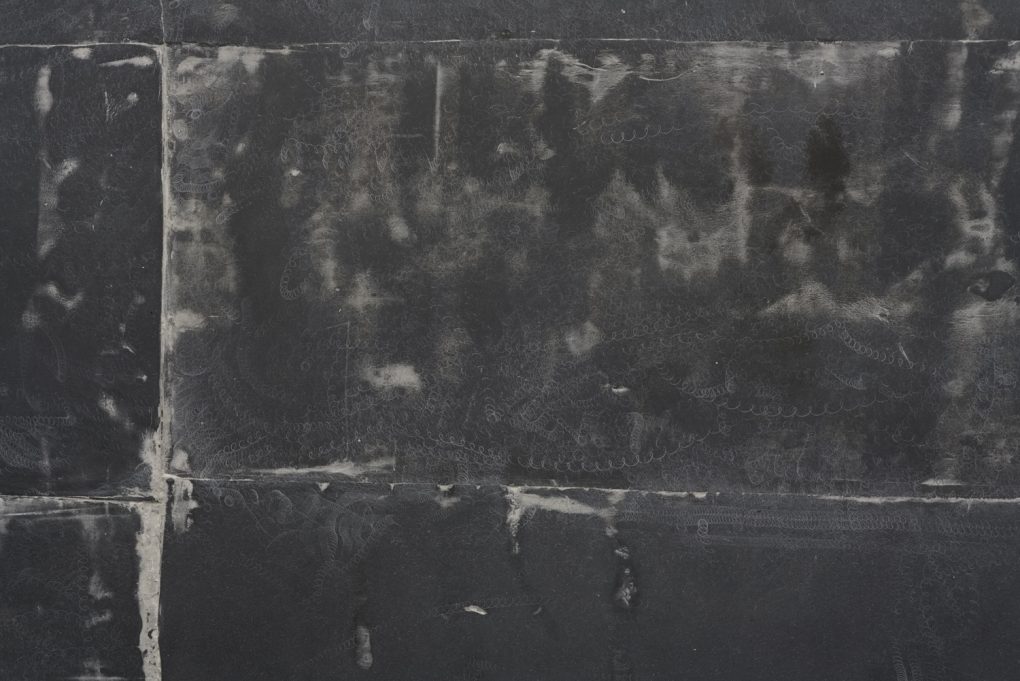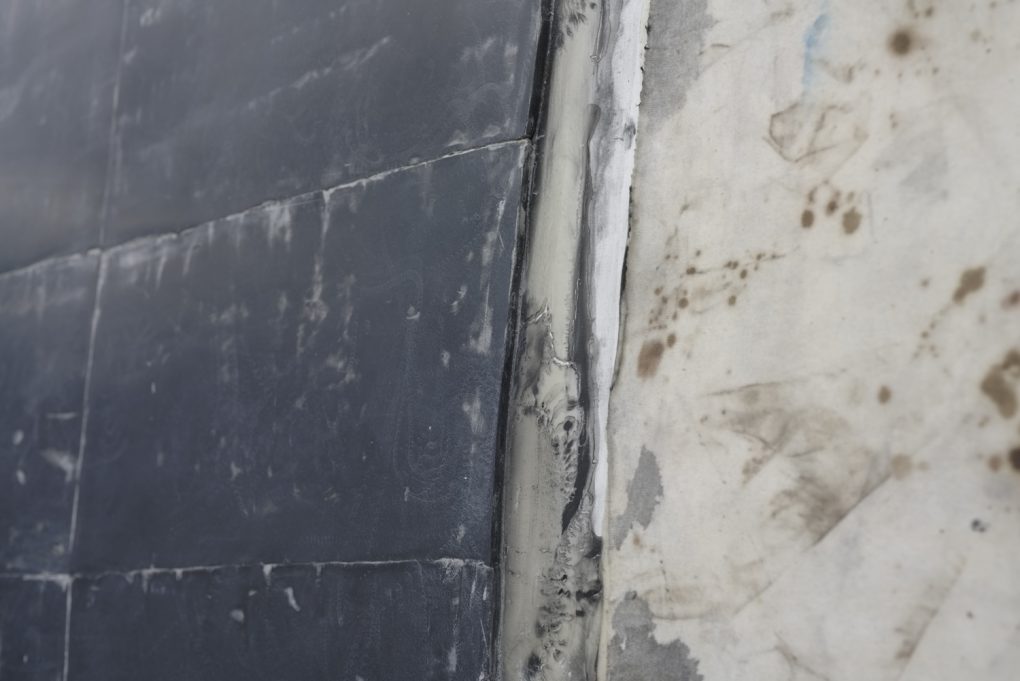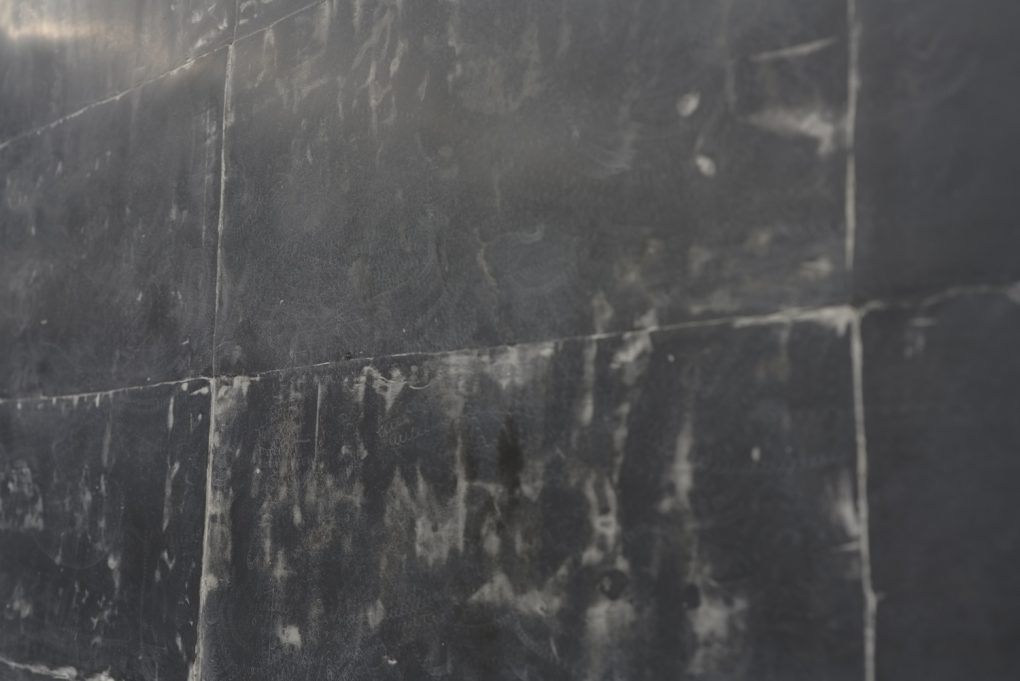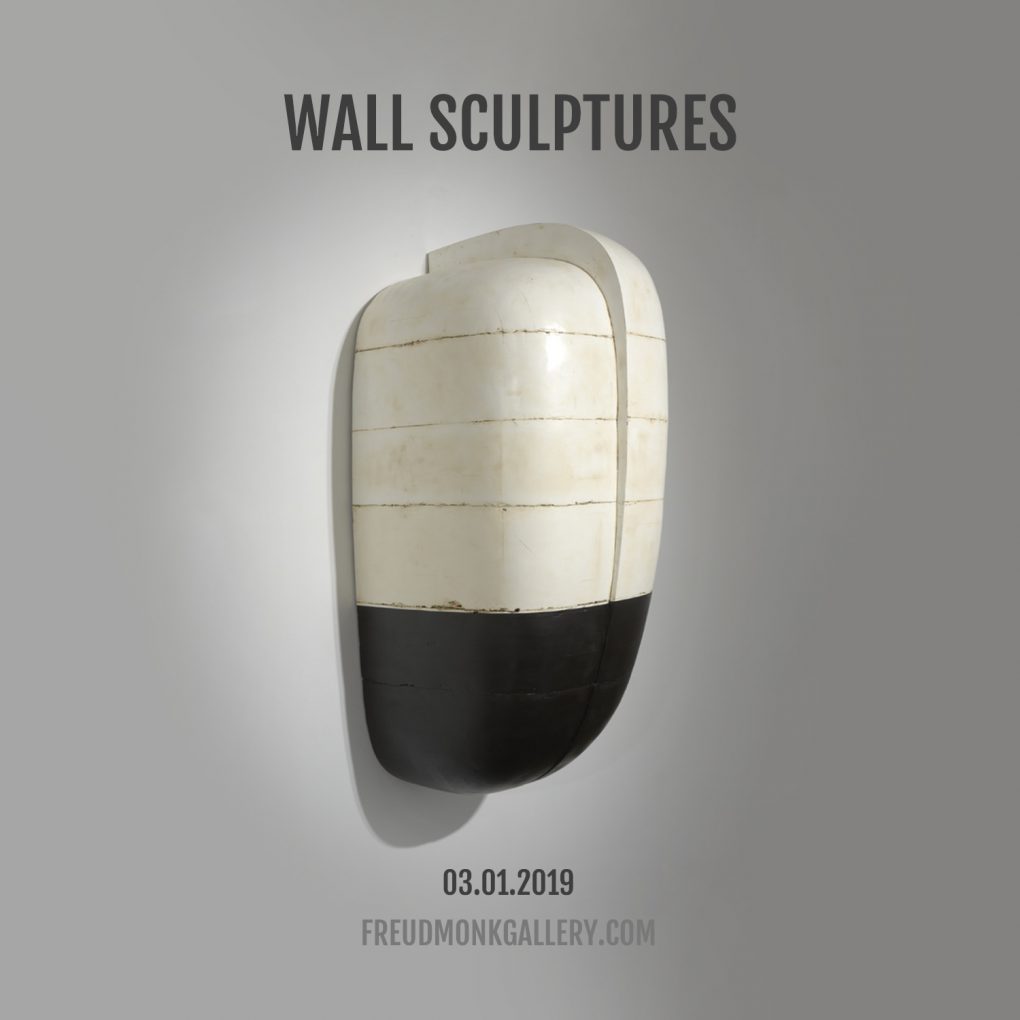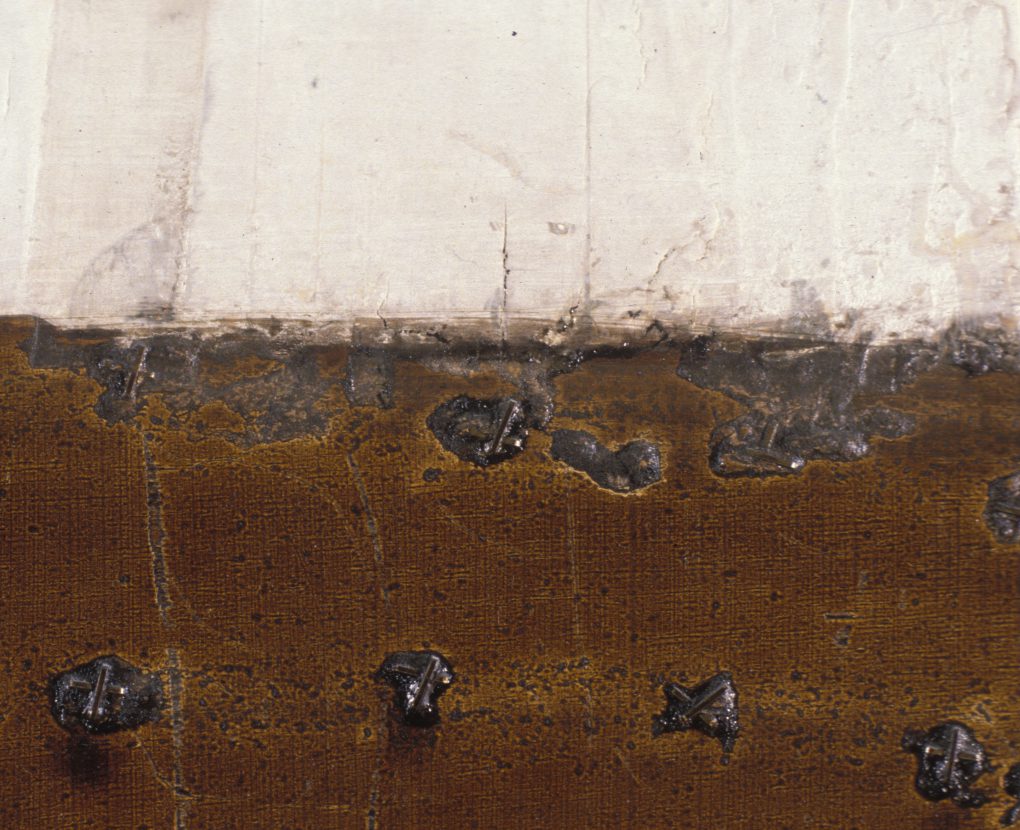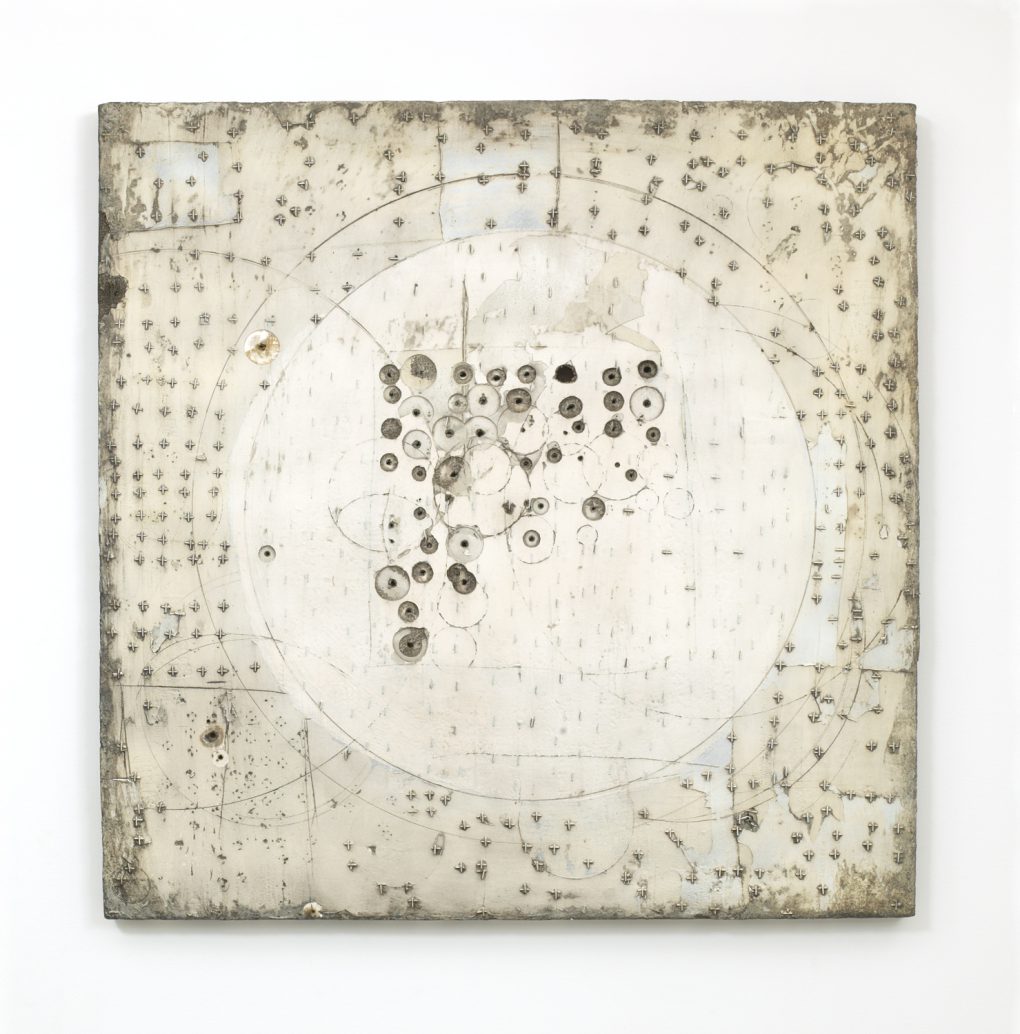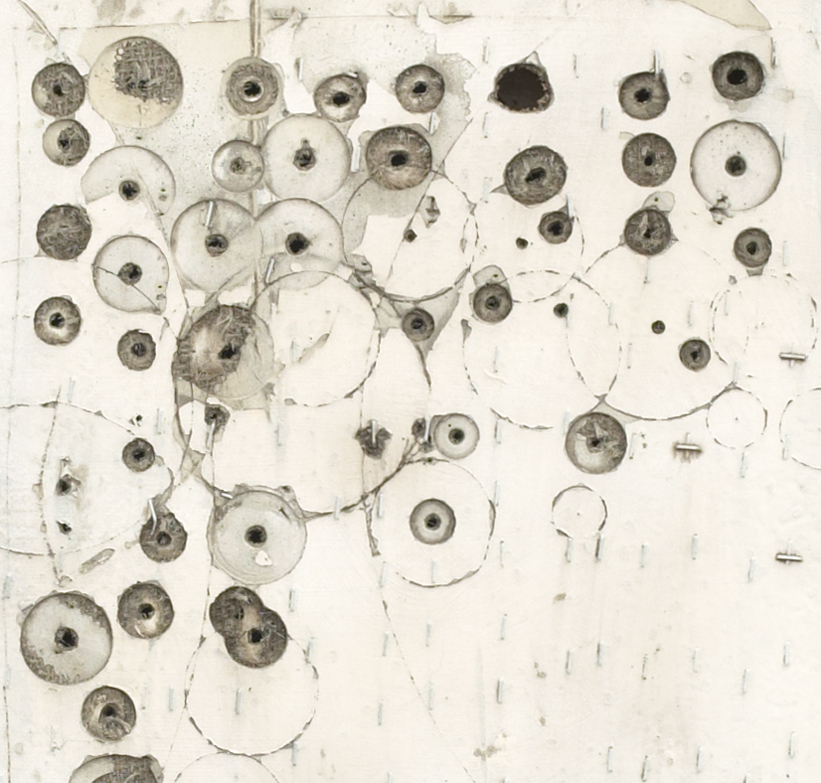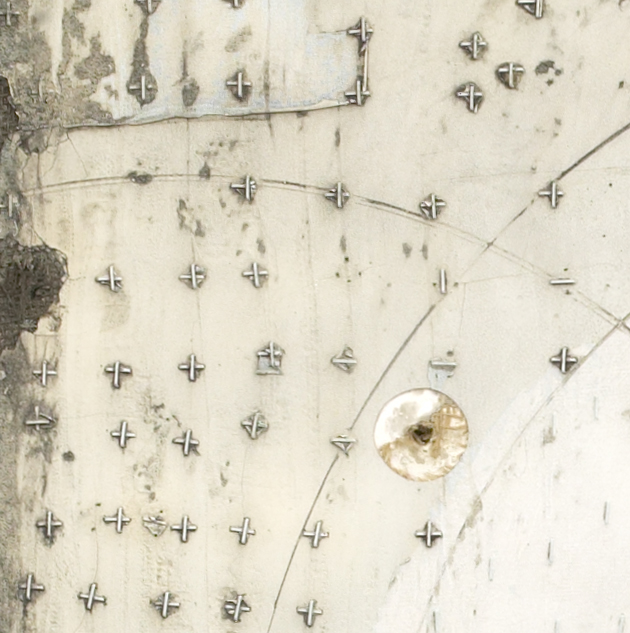-
Full Moon View at The Arts Center at Duck Creek
Friends,
My painting show at The Arts Center at Duck Creek will be open until 9pm on the next full moon night, June 17th—rain or shine. Bring your friends and family and watch as the dark blue night transforms the warm glow of the historic barn.Hot tea and sweets will be served.
11-9pm on Monday, June 17, 2019
Regular hour: 11-6pm, Thursday-Monday and by appointment through June 23rd 2019
-
Images from The Arts Center at Duck Creek Show
Here are some images from my painting show at The Arts Center at Duck Creek.
The show is open Thursday-Monday, 11-6pm or by appointment, until June 23rd, 2019.
-
Preview of Arts Center at Duck Creek show
My show at Arts Center at Duck Creek opens tomorrow. I’m truly mesmerized by the warm, rustic aura of the space. The raw dynamics of wooden structural members holding each other to become a monumental shelter conveys a timeless notion of a gathering place for the people. It is a perfect place for my paintings to tell their stories of being human and what it is to live. I’m truly grateful for the wisdom of the community members to transform the space for arts, community dialogues, music and much more.
We will have an extended opening 5 to 8 tomorrow, June 1st. The Arts Center will have some food, I will make some sushi roles, and my wife is going to bake cookies.
The show will be open Thursday to Monday 11-6pm and by appointment through June 23rd.
As I said I will be at the Arts Center most of the time. Looking forward see some of you there!
-
Exploring A ‘Visual Language’, Interview by Nicole Teitler
In News onOriginal post at The Independent
What influenced you to be in the creative world?
I didn’t grow up around artists at all. In fact, I wasn’t really conscious about what art could do till I went to college and learned about art. It was odd but while I loved making things and drawing as a child, it really didn’t occur to me what it is to make something.
By making something, I mean putting things together to create a wholeness with momentum to move us. It’s about ways to transform the sum of each element into more than the simple equation, to activate the elements with an unknown something to reveal how things really are. I believe dealing with art is one way to be human, with its human deficiency as well as the unknown potential of what we are made of.
How does your creative process differ from sculpture to painting?
The process of painting is one of the most fascinating things for me. It’s a struggle to open myself, observe, and free elements as a cohesive dynamic or narrative emerging before me. I accept, affirm, and become one with the momentum to explore the process. It’s a way to surrender to the material reality while firmly grounding myself in the essence of my being. It’s highly pragmatic, yet, it is also open to the mysterious potential of our fundamental nature. If it sounds strange, well, yes, it is, and the end result can be also very strange but somehow it resonates with my heart.
Sculpture making shares the same aspect of working with the unknown, especially at the beginning of the process, when I come up with the core idea. But the process then becomes more methodical as it involves assembly of materials. It’s like growing a seed slowly with caring hands and heart. Both ways are valid and effective for me.
What are your pieces about? Do you focus on a particular motif?
When I started making art a few decades ago, I was very strict and conscious about not relying on recognizable symbols, images, or narratives. I was aiming to speak a “visual language” based on our perceptions of form elements such as shapes, lines, tones, colors, contrasts, and so on. I thought that was the way to transcend our differences as people and speak some sort of a common language.
I see that even what we regard as ideal principles — “freedom,” “democracy,” “justice,” “humanity,” and so on — are rather artificial within the narratives we are forced to consume in the authoritarian hierarchy of money and violence. I see that our perceptions, for example, are largely based on values, beliefs, and norms cultivated through the pragmatic necessity of surviving within the capitalist hierarchy.
What are your pieces about? Do you focus on a particular motif?
When I started making art a few decades ago, I was very strict and conscious about not relying on recognizable symbols, images, or narratives. I was aiming to speak a “visual language” based on our perceptions of form elements such as shapes, lines, tones, colors, contrasts, and so on. I thought that was the way to transcend our differences as people and speak some sort of a common language.
I still subscribe to the basic idea, but as I get older and see how our world operates, I see that our nature as humans and our relationship to our material reality aren’t that simple. I mean, it is a challenge to express what it is to be human, when our perceptions are so systemically and structurally skewed by the framework of our time.
I see that even what we regard as ideal principles — “freedom,” “democracy,” “justice,” “humanity,” and so on — are rather artificial within the narratives we are forced to consume in the authoritarian hierarchy of money and violence. I see that our perceptions, for example, are largely based on values, beliefs, and norms cultivated through the pragmatic necessity of surviving within the capitalist hierarchy.
How did you get involved with Duck Creek?
I have worked with the director Jess Frost in the past, and she encouraged me to submit an exhibition proposal. I live close to Duck Creek and I have been familiar with the beautiful space so I am very much grateful for the team at Duck Creek for allowing me to show my work there. It is important that the town is supportive of the arts, and it is great that the community-based efforts have been made to offer a venue for art, performance, and music in the area.
Do you have a favorite work you’ve done, thus far?
I always try to pursue new possibilities. So naturally, I think I’ve been always interested in the work I am doing at the moment. But it’s also nice to see old works and find some parts refreshing, intriguing, or even surprising. The thing about art is that the crucial part is always the part that mystifies and triggers a sense of awe. It allows us to be a part of a larger reality, even though we don’t really understand it. That way, it allows us to be humans with dignity somehow.
What’s ahead for you?
I feel that I have so much to do in so many directions. Life is just too short.
The Arts Center at Duck Creek is located at 127 Squaw Road, Springs, East Hampton. Learn more at the website http://www.duckcreekarts.org.
nicole@indyeastend.com
-
Painting Show at Arts Center at Duck Creek
Friends,
I’m very excited and happy to announce that my paintings will be at one of the most beautiful art venues in the region, Arts Center at Duck Creek (127 Squaw Road, East Hampton), from June 1st through June 23rd.The opening reception is June 1 from 5-7.The work shown will be selected paintings from 2013 to 2018. 5 years worth of struggle, surprise, revelation, joy, heartbreak and achievement will be on view at the splendid 19th century barn.
I have lived in the area for over 20 years. Unfortunately, I often realize that I barely know many people who are supportive of arts in my own community. I will be gallery-sitting through most of the duration of the show, Thursday to Monday, 11 to 6. Please come say hi. Please spread the words, invite your friends and family members to see the show. I ‘ll be very happy to meet you and chat.
-
A New Piece, #86
In News on -
A New Piece #85
In News onHere is a new piece. I don’t quite know if it’s a sculpted painting or a painted sculpture. I started it as a painting—it does have layers of paint underneath, but I ended up finishing it with resin, which I used to cover a previous piece, #82. You don’t see much paint on it, but I certainly treated the surface as if it were a painted surface.
#85, 48″ x 60″ x 1.75″, canvas, resin and acrylic, 2019
-
Wall Sculptures at Freud Monk Gallery
Freud Monk Gallery is having an online exhibition of wall sculptures which opens on March 1st. They are showing some of my pieces.
I’ve been enjoying their Instagram posts and the site has intriguing interviews by the artists in the current show. Sign up for email notification at their site. Their page has a link: @freudmonkgallery
-
#1 and #2 added to the site
Two of my oldest pieces #1 and #2 have been added to my site. I remember starting to work on #2 while I was in the graduate program at University of Maryland in 1995. I remember continuing to work on it at the Fine Arts Work Center in Provincetown. Although the pieces were added to the sculpture section at the site, when I started to work on them I had no ambition of embarking on making “sculptures”. I was merely moved by phenomenon after phenomenon appearing and disappearing on the work surfaces. I was interested in an object-like quality—as opposed to a window to look into an illusionistic-paint scape. I was taken by texture, scratch marks, peeled paint and chunky paint blobs. Instead of working on canvas, I started to work on wood panels (hollow core doors were cut into appropriate sizes with the ends refinished) so that I could dig into them, staple them, bore holes and bang on them. I also built the surface with burlap and plaster for more texture. The layers and my improvisation on them revealed many intriguing visual narratives. It completely captivated me that I could speak with my work. #1 was documented with slide film so it has the soft, grainy look. Remember shooting slides, making dupes and sending them out? All the rejection letters? Lol.
#1, plaster, tar and wood, 24″ x 19″, 1995
#1 detail view
#2, acrylic, burlap, enamel, plaster, tar and staple, 36″ x 36″, 1995
#2 detail view
#1 detail view

